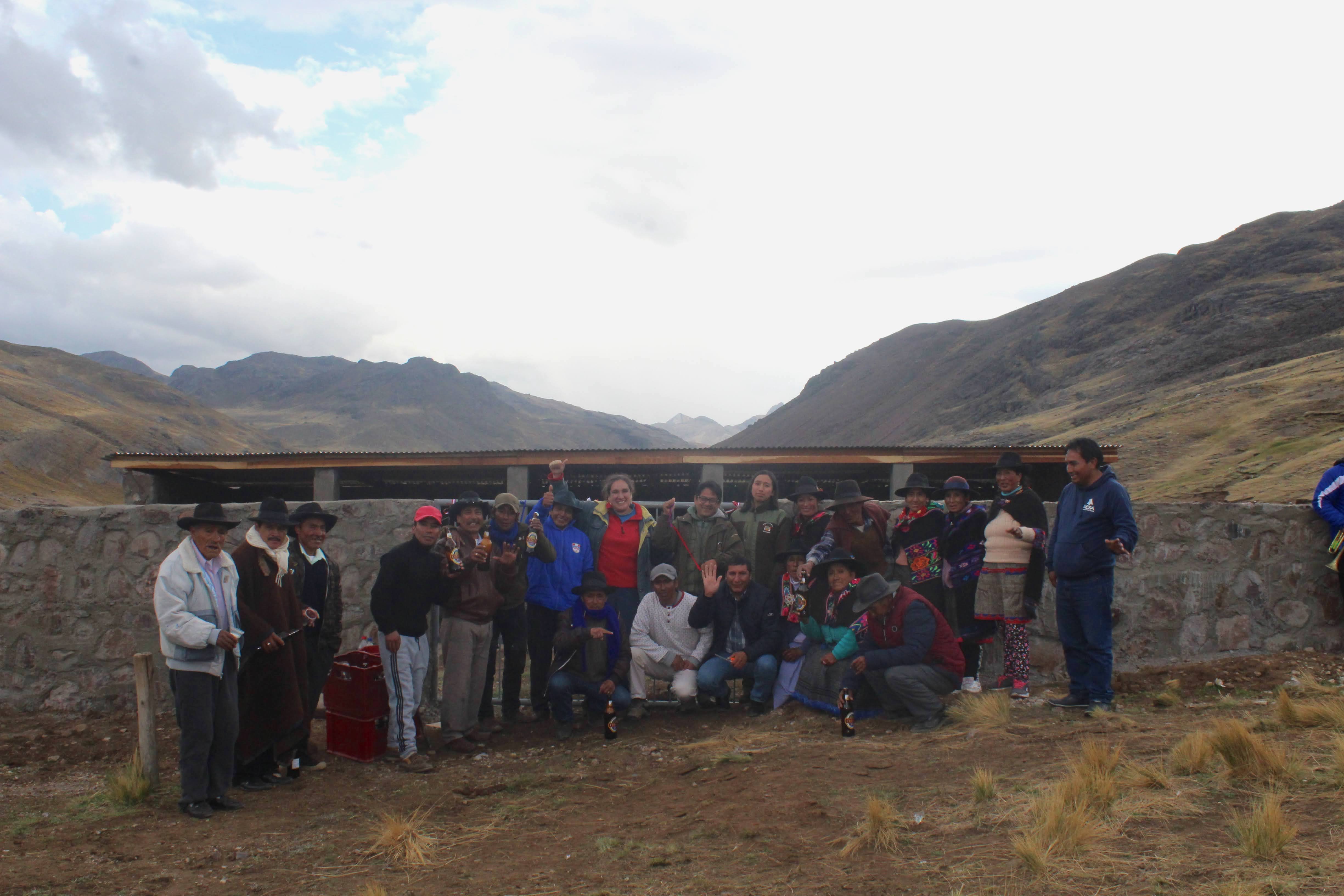

The EbA measure implemented in Tanta includes both green and gray infrastructure.
The green infrastructure, which is the ecosystems, was improved by promoting appropriate pasture and livestock management practices that contribute to the positive conservation status of the pastures. To this end, work was done to strengthen community organization, the participatory design of the livestock management strategy, and the bolstering of local knowledge.
In terms of gray infrastructure, the community prioritized the construction of a shed to reduce the exposure of livestock to climate hazards intensified by climate change, such as hail, and frost, simultaneously protecting them from strong winds and intense sunlight.
The construction of the shed began with the participatory design of the infrastructure, advised by a professional from the local university and validated in a community assembly. Meetings were then held with the livestock department (committee) and directors to plan out the work and the transfer of materials. Prior to the start of construction, the community made an offering to the mountain, a custom they still maintain.
The shed is now operational, the community reports a decrease in animal mortality, and maintenance is being carried out, especially on the roof, using local materials.
- Consolidated community organization, the existence of a participatory pasture and livestock management plan, and augmented local knowledge on key issues such as climate change and sustainable conservation of high Andean ecosystems.
- Open and respectful communication as a central component.
- The leadership of local authorities and specialists (board of directors and livestock department) was promoted.
- Dialogue between local and technical knowledge.
- The community provided the labor for construction.
- Use of local materials such as stone and straw.
-
During the planning phase, allocate sufficient time for critical activities such as infrastructure work, impact monitoring, communications, and systematization of results.
-
Local/community work for infrastructure development and/or maintenance may take longer than anticipated.
-
Seek the commitment and support of local authorities and promote their leadership in decision-making processes. Build partnerships with other institutions in the area to make the EbA measure more sustainable.
-
Participatory planning, local governance, and ownership are key to the success of the measure.